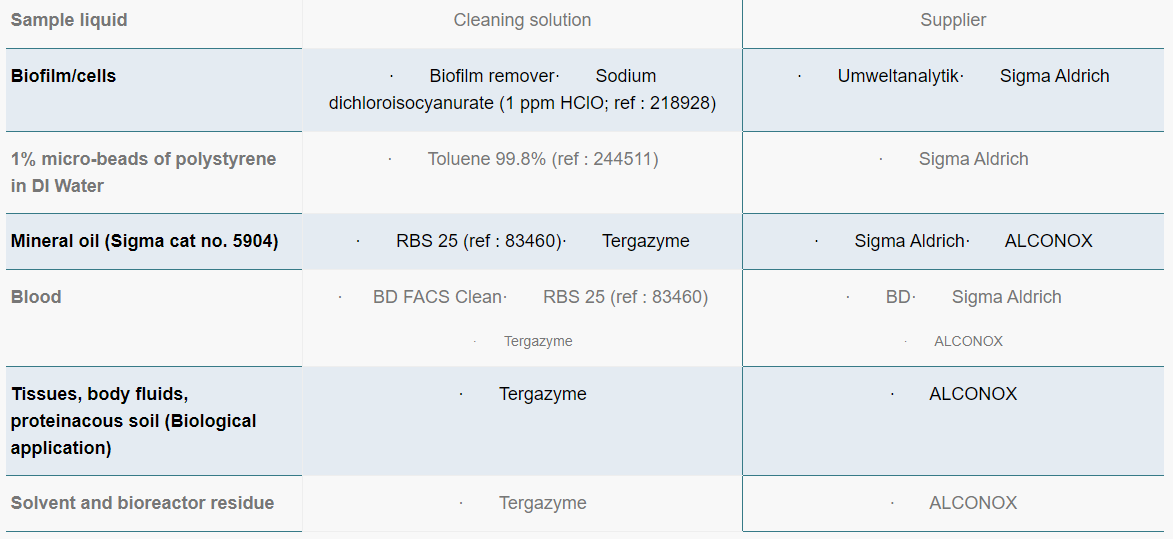Working with multiple liquids
Switching between multiple liquids can leave transient deposits in the form of liquid layers inside the glass capillary. This is especially common for insoluble liquids, but can happen even with miscible liquid combinations. For example, when IPA is followed by water in a sensor without drying in between, large offsets can be observed for hours after switching to water. If possible, dedicate a separate sensor for each different liquid to be measured. If not possible, use caution when switching media and clean properly.
Working with water
When working with water it is recommended not to let the sensor dry out. All salts and minerals in the water will deposit on the glass and are difficult to remove. Although salt solutions are particularly prone to problems, even clean water can still contain enough dissolved minerals to form a deposition layer. Flush with DI water on a regular basis to prevent build-up. If you still encounter problems, occasionally flush the sensor with slightly acidic cleaning agents.
When working with water containing organic materials (sugars, etc.) microorganisms often grow on the walls of the glass capillary and form an organic film that can be difficult to remove. Flush on a regular basis with solvents such as ethanol, methanol or IPA, or with cleaning detergents to remove organic films.
Working with silicone oils
When working with silicone oil it is recommended not to let the sensor dry out. Silicone oils can be cleaned out using special cleaners. Check with your silicone oil supplier for cleaning agents compatible with glass surfaces.
Working with paints or glues
When working with paints or glues it is critical not to let the sensor dry out. Often, depositions of paints and glues cannot be removed anymore after they have dried. Flush the sensor with cleaning agents recommended by your paint or glue manufacturer that are compatible with glass. Ensure that you have found a good cleaning procedure before performing the first tests, and always clean shortly after emptying the sensor.
Working with alcohols or solvents
Unlike most other fluids, alcohols and solvents are not critical and a short flush of isopropanol (IPA) is sufficient to clean the capillary walls.
Other liquids or applications
If uncertain about your application and how to clean the flow sensor, please contact FLUIGENT for additional support at support@fluigent.com
